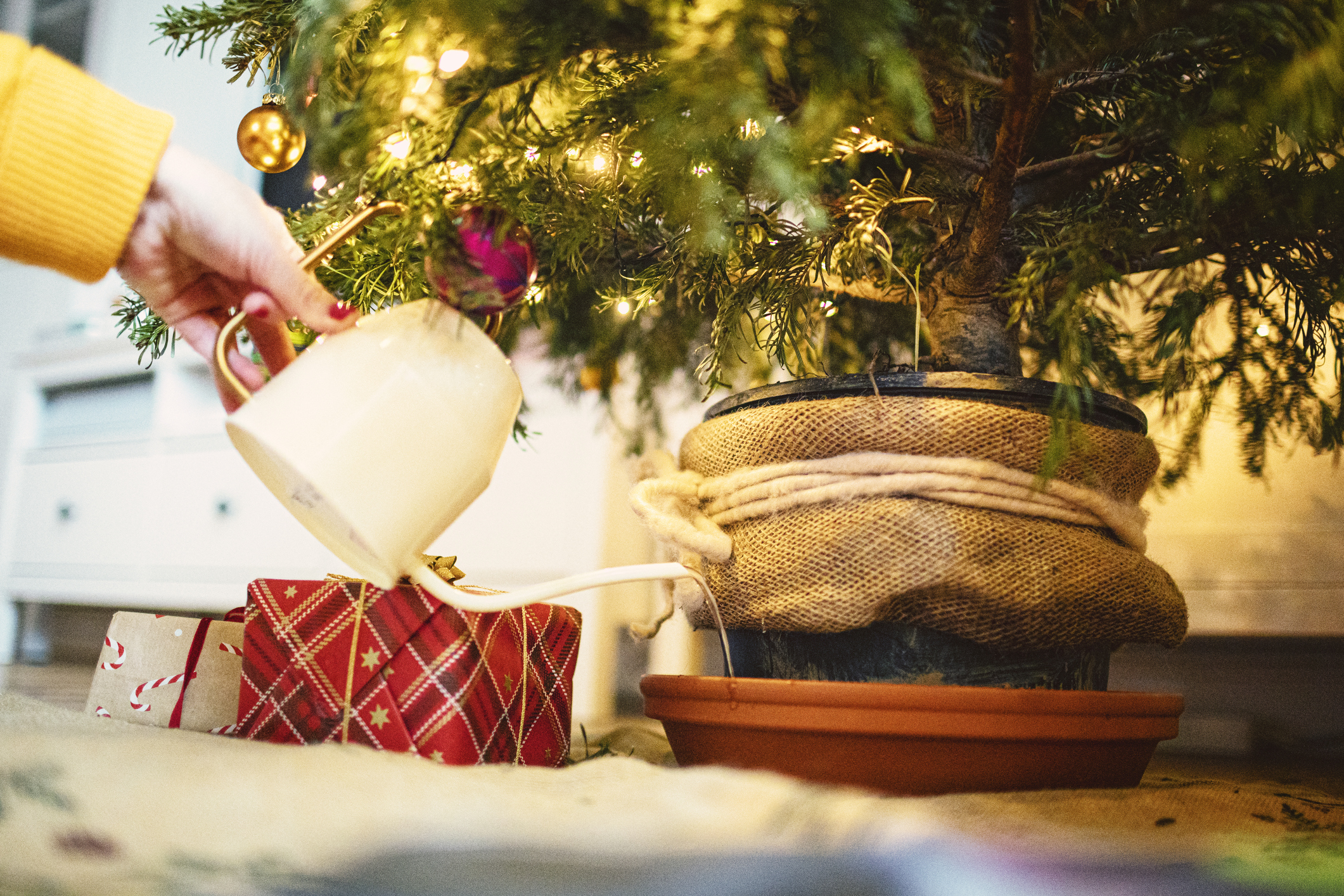How to Keep Your Christmas Tree Alive Longer
You spent real money on a real Christmas tree — here's how to keep it alive.


So you've weighed up whether to buy a fake or a real Christmas tree and plumped for the real one this year, at an average cost of between $80-100. That's not much more than last year as wholesale prices have stabilized, according to the Real Christmas Tree Board. Throw in the cost of Christmas lights, your nicest ornaments, and the presents underneath the three, and it all adds up to a real holiday investment.
But what if the tree's branches are starting to droop, and the needles look a little dry? Here's what you can do to keep your home's festive centerpiece perky throughout the whole holiday season.
1. Pick a fresh Christmas tree
It starts from the beginning. The National Christmas Tree Association (NCTA) recommends you to choose the freshest tree possible.
From just $107.88 $24.99 for Kiplinger Personal Finance
Become a smarter, better informed investor. Subscribe from just $107.88 $24.99, plus get up to 4 Special Issues

Sign up for Kiplinger’s Free Newsletters
Profit and prosper with the best of expert advice on investing, taxes, retirement, personal finance and more - straight to your e-mail.
Profit and prosper with the best of expert advice - straight to your e-mail.
Test for freshness by gently grasping a branch and drawing your hand down the branch. A few green or brown needles falling off isn't a big deal, but if lots of green needles come off, try a different tree.
2. Make a fresh cut
NCTA advises that you cut a 1/2-inch thick disk of wood from the base of the trunk when you get it home — before you put it into a tree stand or container. This will improve the ability of the trunk to absorb water. Forget the cut, and you'll definitely have more falling needles than you can handle.
Don’t cut the trunk at an angle, or into a v-shape, which makes it far more difficult to hold the tree in the stand and also reduces the amount of water available to the tree.
3. Use fresh water
According to the Christmas tree experts at Michigan State University, a fresh tree can use up to 1 quart of water per day for each inch of diameter on the cut end. A typical 7-foot-tall tree with a 3-inch trunk diameter needs up to 3 quarts of water per day.
NCTA recommends that you place your tree in fresh water as soon as you bring it home. This can be a designated Christmas tree stand or a suitable bucket. Check the water level once or twice a day and always keep the base of the tree trunk submerged in a small amount of water.
You want your tree to be drinking a lot of water, which shows the tree is fresh and hydrated.
4. Avoid special additives
It's become a trend to add sugar or bleach or flower food to your tree's water. Your family may even have a homebrew additive you swear by each holiday season. Resist the urge.
The American Society for Horticultural Science tested a range of Christmas tree additives for needle retention potential, and the results show you're better off just using distilled water for overall tree health, cost, and hassle factors:
| Christmas Tree Additive | Needle Loss Percentage |
|---|---|
| Clorox bleach | 99.5% |
| Generic Aspirin | 72.3% |
| "Tree Life" | 33.3% |
| "Yule Prolong" | 29.3% |
| "Floralife" | 27.6% |
| "Tree Care" | 13.3% |
| "Crop-Life" | 9.1% |
| "Keeps-it-Green" | 9.0% |
| Distlilled water | 6.0% |
| Sugar | 5.8% |
| 7-Up | 5.3% |
Unsurprisingly the bleach did not help with needle retention...
5. Avoid heat sources
You should keep your tree away from fireplaces, radiators, heat vents and other heat sources, according to the National Fire Prevention Association. Exposure to heat can dry your tree out early, creating a floor full of needles and an immediate fire hazard.
The National Institute of Standards and Technology ran tests that showed a dry Christmas tree that catches fire will burn an entire room in a mere 20 seconds. By comparison, a fire set multiple times in a watered Christmas tree smoldered briefly before going out on its own. The safety difference between dry and watered couldn't be more clear.
Related content
Profit and prosper with the best of Kiplinger's advice on investing, taxes, retirement, personal finance and much more. Delivered daily. Enter your email in the box and click Sign Me Up.

Ben Demers manages digital content and engagement at Kiplinger, informing readers through a range of personal finance articles, e-newsletters, social media, syndicated content, and videos. He is passionate about helping people lead their best lives through sound financial behavior, particularly saving money at home and avoiding scams and identity theft. Ben graduated with an M.P.S. from Georgetown University and a B.A. from Vassar College. He joined Kiplinger in May 2017.
-
 Forget Financial Forecasts: Focus on These 3 Goals for Success
Forget Financial Forecasts: Focus on These 3 Goals for SuccessWe know the economy is unpredictable and markets will do what they do, no matter who predicts what. Here's how to focus on what you can control.
-
 Why In-Person Financial Guidance Remains the Gold Standard
Why In-Person Financial Guidance Remains the Gold StandardFace-to-face conversations between advisers and clients provide the human touch that encourages accountability and a real connection.
-
 How You Can Turn Your Home Equity Into a Retirement Buffer
How You Can Turn Your Home Equity Into a Retirement BufferIf you're one of the many homeowners who has the bulk of your net worth tied up in your home equity, you might consider using that equity as a planning tool.